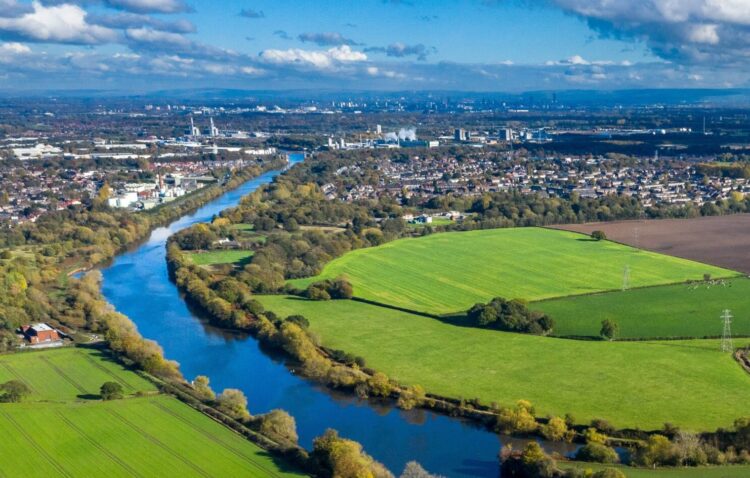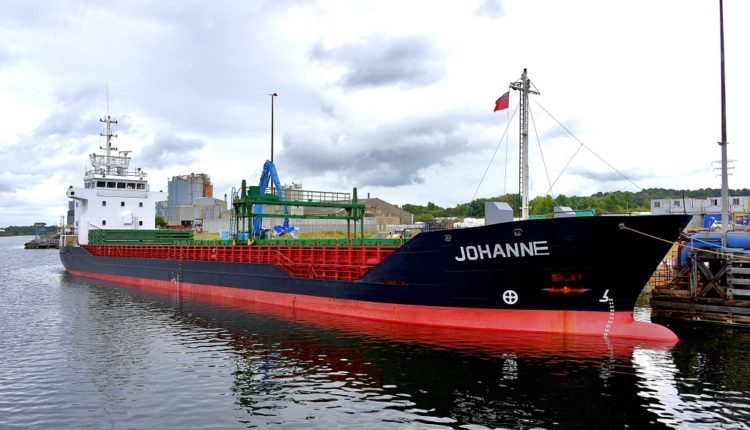Winter storm offers stern test for Manchester Ship Canal
A multi-million pound upgrade to the Manchester Ship Canal was put to the test in January when Storm Christoph sent 40,000 Olympic swimming pools of water through its sluices. Tony McDonough reports

Peel Ports has completed a multi-million pound upgrade of Manchester Ship Canal and the improvements were put to the test in January when Storm Christoph hit the region.
Storm Christoph brought heavy rain and significant flooding to Liverpool city region and the North West in late January. On the ship canal, the equivalent of 40,000 Olympic swimming pools of water passed through the Weaver sluices in just 48 hours.
Over the last six years, Peel Ports has optimised its water management systems, through a series of multi-million-pound investments to help ensure the safety of vessels navigating the Manchester Ship Canal.
This has included upgrades to the canal’s sluices, ensuring the sliding gates are capable of controlling varied and potentially dramatic increases in water flow during severe weather conditions.
When construction started on the 36-mile canal in 1887 its aim was to allow cargo vessels to go direct from the Atlantic Ocean to Manchester, bypassing the Port of Liverpool. Merchants in Manchester believed the charges levied by the port, and the railway companies for unloading and transporting goods, to be excessive.
It cost £15m, equivalent today to almost £2bn. And when it opened to shipping in January 1894 it was the largest river navigation canal in the world. It enabled the the Port of Manchester to become the UK’s third-busiest port, despite being 40 miles inland.
Today, the Manchester Ship Canal is no longer a rival to the Port of Liverpool. Both assets are owned by Peel Ports Group and form part of its integrated £50bn Ocean Gateway strategy.
Ships come to and from the Port of Liverpool, and directly from the Atlantic, to the canal which offers five shipping terminals, including Port Warrington, Runcorn, Ellesmere Port, Salford Quays and QEII Docks at Eastham.
David Huck, managing director, Peel Ports Group, said: “We have accelerated further our planned investments, making significant improvements in our water management system along the Manchester Ship Canal, including optimising sluice gates and their control systems.
“In preparation for Storm Christoph, our teams were on the ground monitoring the water level and key infrastructure including sluices. Despite a huge amount of water passing through these gates, they continued to be capable of controlling the large increase in water levels which is testament to our ongoing investment and management.”

Part of this water management includes the response in the aftermath of heavy rainfall and storms. During a storm, a huge amount of waste is washed into the canal, this waste is removed from the inland waterway for both navigational safety and operational reasons.
On average, 600 tonnes of waste a year is removed from Manchester Ship Canal. However, in the last week alone, it is estimated that 150 tonnes of waste will be removed following Storm Christoph.
Mr Huck added: “In the areas of Manchester Ship Canal which we have responsibility for, we not only prepare for heavy rainfall but also remove navigational hazards in the aftermath of a storm. Along the banks of the canal, there is a huge amount of vegetation which can easily be washed into the water during adverse weather conditions.
“Any obstructions in the canal can prevent ships from freely navigating the inland waterway which is used to move goods between Manchester and Liverpool. It is therefore a priority to remove any large debris, as well as accumulation of general rubbish which we extract all year round to conserve the canal.”
Peel Ports has already committed to deliver further multi-million pound investments on the Manchester Ship Canal in 2021 and other mid to long term projects are currently being evaluated for future delivery, including upgrades to its control systems, locks, gates and sluices.

